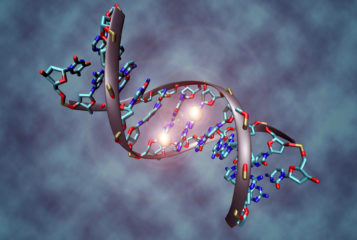Scientists have unveiled a map of the human epigenome - the suite of molecular controllers which turn genes on and off in every human cell.
By shedding light onto the complex regulation of gene expression in the human body, the findings are expected to bring insight into a range of medical conditions, including Alzheimer's disease, cancer and autism.
Even though all cells contain the same DNA sequence, epigenomic modifications give them their specific identities by controlling which genes are expressed, when, and in which cells.
To better understand this 'other genome', researchers have mapped and publicly released the epigenomes of over 100 different human cell types, in both healthy and disease states, as part of the Roadmap Epigenomics Project.
'All our cells have a copy of the same book, but they're reading different chapters, bookmarking different pages,' said Professor Manolis Kellis of the Massachusetts Institute of Technology, a lead researcher on one of two dozen studies published in Nature.
'The human epigenome is the collection of marks placed on the genome in each cell type.'
These marks may hold clues to better understand complex diseases, which often have many, seemingly unrelated mutations that leave scientists puzzled.
Cross-referencing these mutations with the newly available maps has already turned up some unexpected insights. For example, mutations found in Alzheimer's disease appear to alter the epigenomic signature of not only brain cells, but also those of the immune system.
Cancer is another area in which epigenomics is anticipated to make an impact. In one of the published papers, by comparing epigenomic landscapes, researchers were able to trace metastatic cancers back to the type of cells they originally arose from with 90 percent accuracy, providing crucial information which could guide treatment.
Such discoveries open up fresh avenues for understanding these diseases and may even lead to new treatments.
The studies follow the publication of the results of the ENCODE project in 2012 (see BioNews 672) which mapped epigenetic modifications in a handful of laboratory cell lines. But, by using cells taken directly from the human body and from such a range of tissues, the epigenomic roadmap is expected to have much greater clinical use.





Leave a Reply
You must be logged in to post a comment.